The Shark was the last of Blackburn's torpedo-bombers, largely eclipsed in WW2 by the Fairey Swordfish, but still active from the Channel to Malaya until 1942. It first flew in 1933, as the Blackburn T.9 B6 to answer the Air Ministry Specification S.15/33 for a combined torpedo-(naval artillery) spotter-reconnaissance aircraft or "TSR", to which Fairey answered with the TSR-1, future Swordfish. The Shark Mark I was approved in 1934 with 16 aircraft, followed by the Mark II for the specs. 13/35. and 13/38 and the Mark III entering service in 1935 with 820 NAS. It was also declined as a floatplane for HMS Warspite and HMS Repulse, and saw service from some carriers, but gradually replaced by the swordfish from 1937. The last were used in Malaya in 1942 and the Canadian Shark III until 1944 as floatplane trainers.

On 24 August 1933, the Blackburn B-6 prototype made its maiden fly at Brough. After manufacturer trials, with an engine enclosed in a long-chord cowling, it was delivered to the Aeroplane and Armament Experimental Establishment at RAF Martlesham Heath. The test pilot there brough it through a gruelling performance evaluation on 26 November 1933. After this testing phase at Martlesham, mostly positive, the B6 was transferred to Gosport to test deck landing on HMS Courageous. They were successful so the prototype was sent to the Directorate of Technical Development for the last official tests. They, too, were successful, so the company received a greenlight for production on August 1934, of just sixteen aircraft for the FAA. One month later, Blackburn was so confident everything was ready and it commenced.
In October 1934, the FAA sanctioned the name "Shark, Mark I" as this firts batch official name. But unit testing seeon revealed a lot of minor issues. Series of modifications were implemented such as:
-Lengthened engine cowling, enclosing the exhaust collector ring.
-Conversion gear to a seaplane configuration (reversible) for the most spectacular
The B6 prototype was overhauled, outfitted with twin floats with shock absorbers integrated into the struts. Early test flights were performed at Brough in April 1935 and successful sea trials in all sorts of weather at the Marine Aircraft Experimental Establishment in Felixstowe.
This still comprised the initial batch of 16 Mk I (Tiger IV engine), 126 Mk II (with the 760 hp/570 kW Tiger VI radial) and 95 Mk III (with a 760 hp/570 kW) Tiger VI radia). The Shark III now had a glazed cockpit canopy, plus a three-bladed Rotol wooden propellers indtead of the previous 2-bladed one. Later production saw sub-assembly of components at Blackburn's new factory in Dumbarton (Scotland). The airframes were transported by road to the Clyde at Abbotsinch near Glasgow for flight testing. The design team on the TSR opted to eliminate all streamlined bracing wires for slanted struts as a start. The wings were still made folding for stowage thanks to a hydraulic wing-locking mechanism to speed up the process. The TSR also featured a tracking tail and pneumatic wheel brakes, whereas the landing gear was large and very robust, with oversized wheels to help reducing the bouncing while still cushioning hard landings. The design process was partly helped by what the previous team made with the Blackburn Baffin such as the camber-changing flaps and a modern fuselage construction.
The design team on the TSR opted to eliminate all streamlined bracing wires for slanted struts as a start. The wings were still made folding for stowage thanks to a hydraulic wing-locking mechanism to speed up the process. The TSR also featured a tracking tail and pneumatic wheel brakes, whereas the landing gear was large and very robust, with oversized wheels to help reducing the bouncing while still cushioning hard landings. The design process was partly helped by what the previous team made with the Blackburn Baffin such as the camber-changing flaps and a modern fuselage construction.
Initially, two open cockpits were fitted (later enclose canopies fopr the Mark III), but they were heated by an exhaust pipe muff for long patrols over the icy cold Atlantic. The crew of three was composed of a pilot seated in the first cockpit and an observer doubling (or tripling in that case) as wireless operator, and gunner in a second, elongated cockpit behind that had two alternated seats, so the aircraft coukld carry if needed a crew of three. There was even a prone position for bombing missions with a watertight hatch and hinged course-setting bomb sight. The latter's fusing controls were placed within reach of either the pilot and observer.
The fuselage was strengthened also for catapult launches, and divided into watertight compartments in case of water landing. The whole structure was made of stainless steel tubular spars as well as light alloy ribs. The tail section was shaped the same way, but there was an Alclad-plated fin. All flying surfaces had fabric coverings, doped, with wing tips detachable for easy replacement if damaged.
The Blackburn B-6 was powered by with a 700 hp (520 kW) Armstrong Siddeley Tiger IV engine. The main fuel tanks were detachable and composed of duralumin, carried in separate watertight compartments, forward of the pilot for 182.5 gallons total. This made up for a range of 623 miles, extended to 1,130 miles when fitting an extra cylindrical tank in place of the torpedo and compatible with the same crutches, for an extra 150 gallons of fuel.
This early engine provided a top speed of 120 mph on average (data not known). Range and speed were improved on the next Mark II, which had the more recent Armstrong Siddeley Tiger VI 14-cylinder air-cooled radial piston engine rated for 760 hp (570 kW). This provided a Power/mass ratio of 0.0937 hp/lb (0.1540 kW/kg). The Shark had a wing loading: 16.6 lb/sq ft (81 kg/m2) unladen. This 760 hp radia enabled a top speed of 150 mph (240 km/h, 130 kn), and cruising at 118 mph (190 km/h, 103 kn) for long range, which was 625 mi (1,006 km, 543 nmi) or four hours and 54 minutes. Service ceiling was 15,600 ft (4,800 m) for observation, but the rate of climb was only of 895 ft/min (4.55 m/s) with a time to altitude of 6,500 ft (2,000 m) in 7 minutes 6 seconds.
Shark Mark II with torpedo (pinterest)
The Shark could fly either with two or three crewmen. In latter case, even if the observer was doubling as gunner, the pilot was not unarmed. He was provided with a fixed and forward-firing .303 in (7.7 mm) Vickers machine gun. There was of course the defensive .303 in (7.7 mm) Vickers K machine gun, or a Lewis Gun mounted on a Scarff ring aft of the cockpit. The observer/radio/Navigator/gunner had all ten ammunition pans stored within in cockpit with easy reach. The underbelly was reinforced with straps to lift and maintained a 1,500 lb (680 kg) torpedo, or equivalent bombload.
At the time, the Mark II operated the Mark VIII* torpedo. It was a 1,425 lb (646 kg), 16 ft 8 in (5.08 m) 1914 model (Mark VIII*) powered by Wet heater to 1,500 yd (1,400 m) at 41 kn (76 km/h), 2,000 yd (1,800 m) at 39 kn (72 km/h), 3,500 yd (3,200 m) at 29 kn (54 km/h) 4,000 yd (3,700 m) at 28 kn (52 km/h) depeding on the setup. It carroed a 320 lb (150 kg) TNT warhead.
However it soon changed. The average airborne torpedo used by the FAA in the interwar was the 18"(45 cm) Mark XII designed at the time the Swordfish and Shark Mark II started production. It entered Service in 1937, so the first Mark I and II tested had WWI aerial torpedoes such as the 18" (45 cm) Mark XI. This model was in service by 1936, weighted 1,500 lbs. (680 kg) and carried a warhead of 465 lbs. (211 kg) TNT at 1,500 yards (1,370 m)/40 knots or 4,000 yards (3,660 m) at 24-25 knots with its Burner-cycle engine. More importantly it could be dropped from 30-100 feet (9-30 m) at 150 knots and not dive below 60 feet (18 m), then recover to set depth within 400 yards (360 m).

The Mark XII weight 1,548 lbs. (702 kg) for an overall of length on 16 ft 3 in (4.953 m) and a negative Buoyancy of about 230 lbs. (104 kg). It carried an explosive Charge of 388 lbs. (176 kg) TNT 1 up to 1,500 yards (1,370 m), running at either the 40 knots setting or a longer 3,500 yards (3,200 m) but at 37 knots setting. This was electrically activated either by the gunner or pilot, and the torpedo had a Burner-cycle engine rated for 140 hp at 40 knots. This model sometimes is described with a warhead of 440 lbs. (200 kg). An improved Mark XI was tested in 1941 and was still in limited use until 1945. It's possible that the Shark deployed in Burma had access to the 1938 Mark XIV capable of 45 knots, but almost the entire stock was lost with the surrender of Singapore. It used methylated spirits as fuel but was less reliable overall.

HMS Courageous Jan 1937 Blackburn Shark of 820 Sqn (pinterest/flickr)
In May 1935, the Shark Mark I entered service, with 820 Naval Air Squadron (NAS), replacing Fairey Seals in service with HMS Courageous. In 1936 they did the same with squadrons 810 and 821. The FAA deployed the Shark Mark II soon on its landplane configuration (IIa) on aircraft carriers or battlecruisers like HMS Repulse. HMS Warspite also deployed one, giving it a long range spotter/reconnssiance mode, either catapult-launched or lowered if the weather permitted, to take off from the water. But it was dependent on available equipment. Pilots praised its seaworthiness, especially in common rough water handling. Both its soft water landing and buoyancy characteristics were much appreciated. In all, the Shark soldiered on with the 701, 705, 753, 755, 757, 758, 767, 774, 780, 785, 810, 821, 822 Naval Air Squadron.
 However the Shark unlike the Swordfish, had a short timespan, as the latter was recoignized as more capable by 1937. Still, the Shark II and III (The Mark I went to training) continued operaitons until worked war tow broke out. Many Shark IIs were still perated by the B and C training flights at Lee-on-Solent in 1939. Twinety of them were converted by Blackburn into target tugs and trained units at Abbotsinch, Gosport, Crail, Arbroath by 1939. On 4 January 1939, two Sharks worked for No. 4 Anti-Aircraft Co-Operation Unit in Seletar at Singapore after being shipped there.
However the Shark unlike the Swordfish, had a short timespan, as the latter was recoignized as more capable by 1937. Still, the Shark II and III (The Mark I went to training) continued operaitons until worked war tow broke out. Many Shark IIs were still perated by the B and C training flights at Lee-on-Solent in 1939. Twinety of them were converted by Blackburn into target tugs and trained units at Abbotsinch, Gosport, Crail, Arbroath by 1939. On 4 January 1939, two Sharks worked for No. 4 Anti-Aircraft Co-Operation Unit in Seletar at Singapore after being shipped there.

Shark III on HMS Thane (D48). Deck handling practise on HMS Thane with an obsolete Blackburn Shark. HMS Thane and escort aircraft carrier of the British Royal Navy leaving Chesapeake Bay heading for New York, October 5th 1944 with a ferry load of Grumman Hellcats.
She Shark played a role in the May-June Dunkirk evacuation by patorlling the English Channel in search of Kriegsmarine E-boats, especially by night, lighting them up with flares to be caught by coastal batteries or freindly destroyers and MTBs. No Shark carried bombs. Poor weather conditions eventually curtaikled these efforts. The Shark III soldiered on for training aerial observers and navigators in many base, such as Trinidad, far remote from the frontline. In the latter, they operated as late as 1942. The last at that stage were still used as RAF Seletar as target tugs. By January 1942 those in the far east, by default of better assets, were pressed back in combat for patrol missions and bombing raids against the Imperial Japanese Army advaning through Malaya. They were easy prey for IJA and IJN fighters if caught. After the fall or Malaya and Singapore, they disappeared.
In 1936, the Royal Canadian Air Force (RCAF) purchased seven Blackburn Shark II with the Tiger VI engine. Four arrived in September, operated by No 6 (TB) Squadron and later No 6 (BR) Sqn. for patrols off the Pacific coast. The pilots and mechanics appreciated its ruggedness and ease of maintenance in adverse northwest pacific conditions, operating for long uncared patorls far from workshops. Canada by 1939 wanted to produce it, and two Shark IIIs were supplied as pattern aircraft, helping to manufacture 17 more at Boeing Aircraft of Canada, Vancouver. They had stainless steel spars from Boulton Paul. These production Canadian Sharks had 840 hp (630 kW) Pegasus IX engines. They ended in both Nos 4 and 6 (BR) Squadrons. No further production started as it was recoignized as obsolete. But it was deployed for reconnaissance and escort until August 1944. The last still flyable were transferred to the RN Air Observers School in Trinidad and soldiered on until 1945.

Development
The Blackburn T.9 Shark originted as a private venture in 1933, and named prospectively the Blackburn T.S.R. for "torpedo-spotter-reconnaissance" in conformance with Air Ministry Specification S.15/33. The Navy wanted a combined torpedo and naval artillery spotter and reconnaissance aircraft. The Fleet Air Arm (FAA) indeed had antiquated biplanes that needed replacement. Blackburn competed for this with Fairey Aviation, which designed the TSR 1, ancestor of the Fairey Swordfish. The T.S.R. was a brand new world for Blackburn, that rejuvenated its design team. The result was still a biplane, but it made much sense in 1933 and Fairey was no different. However many innovations and indeas were encompassed in the design, see below for details.On 24 August 1933, the Blackburn B-6 prototype made its maiden fly at Brough. After manufacturer trials, with an engine enclosed in a long-chord cowling, it was delivered to the Aeroplane and Armament Experimental Establishment at RAF Martlesham Heath. The test pilot there brough it through a gruelling performance evaluation on 26 November 1933. After this testing phase at Martlesham, mostly positive, the B6 was transferred to Gosport to test deck landing on HMS Courageous. They were successful so the prototype was sent to the Directorate of Technical Development for the last official tests. They, too, were successful, so the company received a greenlight for production on August 1934, of just sixteen aircraft for the FAA. One month later, Blackburn was so confident everything was ready and it commenced.
In October 1934, the FAA sanctioned the name "Shark, Mark I" as this firts batch official name. But unit testing seeon revealed a lot of minor issues. Series of modifications were implemented such as:
-Lengthened engine cowling, enclosing the exhaust collector ring.
-Conversion gear to a seaplane configuration (reversible) for the most spectacular
The B6 prototype was overhauled, outfitted with twin floats with shock absorbers integrated into the struts. Early test flights were performed at Brough in April 1935 and successful sea trials in all sorts of weather at the Marine Aircraft Experimental Establishment in Felixstowe.
Production and Variants
Blackburn was issued contract No. 334315/34 under the new Specification 13/35. I, and later contract No. 510994/35 for Specification 19/36 issued in January 1937. More contracts followed. In between the company geared up its production rate, which greatly exceeded all preceding Blackburn aircraft. For the three-year production run, 238 Sharks Mar II were delivered to the FAA.This still comprised the initial batch of 16 Mk I (Tiger IV engine), 126 Mk II (with the 760 hp/570 kW Tiger VI radial) and 95 Mk III (with a 760 hp/570 kW) Tiger VI radia). The Shark III now had a glazed cockpit canopy, plus a three-bladed Rotol wooden propellers indtead of the previous 2-bladed one. Later production saw sub-assembly of components at Blackburn's new factory in Dumbarton (Scotland). The airframes were transported by road to the Clyde at Abbotsinch near Glasgow for flight testing.
- B-3 Torpedo-bomber prototype
- B-6 Shark prototype
- Shark Mk I, (16 made) 2/3 seat RN, powered by a 700 hp (500 kW) Armstrong Siddeley Tiger IV radial engine.
- Shark Mk II: Same, also used by the RCAF. 760 hp (570 kW) Armstrong Siddeley Tiger VI radial engine.
- Shark Mk IIA: Floatplane for the Portuguese Navy. 760 hp (570 kW) Armstrong Siddeley Tiger VIC. 6 made.
- Shark Mk III: Glazed canopy, dual controls for training. 800 hp (600 kW) Bristol Pegasus III
Design
General conception
 The design team on the TSR opted to eliminate all streamlined bracing wires for slanted struts as a start. The wings were still made folding for stowage thanks to a hydraulic wing-locking mechanism to speed up the process. The TSR also featured a tracking tail and pneumatic wheel brakes, whereas the landing gear was large and very robust, with oversized wheels to help reducing the bouncing while still cushioning hard landings. The design process was partly helped by what the previous team made with the Blackburn Baffin such as the camber-changing flaps and a modern fuselage construction.
The design team on the TSR opted to eliminate all streamlined bracing wires for slanted struts as a start. The wings were still made folding for stowage thanks to a hydraulic wing-locking mechanism to speed up the process. The TSR also featured a tracking tail and pneumatic wheel brakes, whereas the landing gear was large and very robust, with oversized wheels to help reducing the bouncing while still cushioning hard landings. The design process was partly helped by what the previous team made with the Blackburn Baffin such as the camber-changing flaps and a modern fuselage construction.
Initially, two open cockpits were fitted (later enclose canopies fopr the Mark III), but they were heated by an exhaust pipe muff for long patrols over the icy cold Atlantic. The crew of three was composed of a pilot seated in the first cockpit and an observer doubling (or tripling in that case) as wireless operator, and gunner in a second, elongated cockpit behind that had two alternated seats, so the aircraft coukld carry if needed a crew of three. There was even a prone position for bombing missions with a watertight hatch and hinged course-setting bomb sight. The latter's fusing controls were placed within reach of either the pilot and observer.
The fuselage was strengthened also for catapult launches, and divided into watertight compartments in case of water landing. The whole structure was made of stainless steel tubular spars as well as light alloy ribs. The tail section was shaped the same way, but there was an Alclad-plated fin. All flying surfaces had fabric coverings, doped, with wing tips detachable for easy replacement if damaged.
Engine

The Blackburn B-6 was powered by with a 700 hp (520 kW) Armstrong Siddeley Tiger IV engine. The main fuel tanks were detachable and composed of duralumin, carried in separate watertight compartments, forward of the pilot for 182.5 gallons total. This made up for a range of 623 miles, extended to 1,130 miles when fitting an extra cylindrical tank in place of the torpedo and compatible with the same crutches, for an extra 150 gallons of fuel.
This early engine provided a top speed of 120 mph on average (data not known). Range and speed were improved on the next Mark II, which had the more recent Armstrong Siddeley Tiger VI 14-cylinder air-cooled radial piston engine rated for 760 hp (570 kW). This provided a Power/mass ratio of 0.0937 hp/lb (0.1540 kW/kg). The Shark had a wing loading: 16.6 lb/sq ft (81 kg/m2) unladen. This 760 hp radia enabled a top speed of 150 mph (240 km/h, 130 kn), and cruising at 118 mph (190 km/h, 103 kn) for long range, which was 625 mi (1,006 km, 543 nmi) or four hours and 54 minutes. Service ceiling was 15,600 ft (4,800 m) for observation, but the rate of climb was only of 895 ft/min (4.55 m/s) with a time to altitude of 6,500 ft (2,000 m) in 7 minutes 6 seconds.
Armament

Shark Mark II with torpedo (pinterest)
The Shark could fly either with two or three crewmen. In latter case, even if the observer was doubling as gunner, the pilot was not unarmed. He was provided with a fixed and forward-firing .303 in (7.7 mm) Vickers machine gun. There was of course the defensive .303 in (7.7 mm) Vickers K machine gun, or a Lewis Gun mounted on a Scarff ring aft of the cockpit. The observer/radio/Navigator/gunner had all ten ammunition pans stored within in cockpit with easy reach. The underbelly was reinforced with straps to lift and maintained a 1,500 lb (680 kg) torpedo, or equivalent bombload.
At the time, the Mark II operated the Mark VIII* torpedo. It was a 1,425 lb (646 kg), 16 ft 8 in (5.08 m) 1914 model (Mark VIII*) powered by Wet heater to 1,500 yd (1,400 m) at 41 kn (76 km/h), 2,000 yd (1,800 m) at 39 kn (72 km/h), 3,500 yd (3,200 m) at 29 kn (54 km/h) 4,000 yd (3,700 m) at 28 kn (52 km/h) depeding on the setup. It carroed a 320 lb (150 kg) TNT warhead.
However it soon changed. The average airborne torpedo used by the FAA in the interwar was the 18"(45 cm) Mark XII designed at the time the Swordfish and Shark Mark II started production. It entered Service in 1937, so the first Mark I and II tested had WWI aerial torpedoes such as the 18" (45 cm) Mark XI. This model was in service by 1936, weighted 1,500 lbs. (680 kg) and carried a warhead of 465 lbs. (211 kg) TNT at 1,500 yards (1,370 m)/40 knots or 4,000 yards (3,660 m) at 24-25 knots with its Burner-cycle engine. More importantly it could be dropped from 30-100 feet (9-30 m) at 150 knots and not dive below 60 feet (18 m), then recover to set depth within 400 yards (360 m).

The Mark XII weight 1,548 lbs. (702 kg) for an overall of length on 16 ft 3 in (4.953 m) and a negative Buoyancy of about 230 lbs. (104 kg). It carried an explosive Charge of 388 lbs. (176 kg) TNT 1 up to 1,500 yards (1,370 m), running at either the 40 knots setting or a longer 3,500 yards (3,200 m) but at 37 knots setting. This was electrically activated either by the gunner or pilot, and the torpedo had a Burner-cycle engine rated for 140 hp at 40 knots. This model sometimes is described with a warhead of 440 lbs. (200 kg). An improved Mark XI was tested in 1941 and was still in limited use until 1945. It's possible that the Shark deployed in Burma had access to the 1938 Mark XIV capable of 45 knots, but almost the entire stock was lost with the surrender of Singapore. It used methylated spirits as fuel but was less reliable overall.
⚙ Blackburn Shark II specifications | |
| Empty Weight | 4,039 lb (1,832 kg) |
| Gross weight | 8,111 lb (3,679 kg) |
| Lenght | 35 ft 3 in (10.74 m) |
| Wingspan | 46 ft (14 m) |
| Height | 12 ft 1 in (3.68 m) |
| Wing Area | 489 sq ft (45.4 m2) |
| Engine | Tiger VI 14-cyl. AC radial 760 hp (570 kW) |
| Propeller | 2-bladed fixed-pitch, wooden |
| Top Speed, sea level | 150 mph (240 km/h, 130 kn) |
| Cruise Speed | 118 mph (190 km/h, 103 kn) |
| Range | 625 mi (1,006 km, 543 nmi), 4 hours 54 minutes |
| Climb Rate | 895 ft/min (4.55 m/s) |
| Ceiling | 15,600 ft (4,800 m) |
| Armament | Fixed .303-in Vickers fwd, flexible 0.303-in Vickers K/Lewis, 18-in torpedo or 1,600 lb (730 kg) bombs. |
| Crew | 2-3: Pilot +Observer/Radio, +Gunner |
Service
With the Fleet Air Arm 1935-42

HMS Courageous Jan 1937 Blackburn Shark of 820 Sqn (pinterest/flickr)
In May 1935, the Shark Mark I entered service, with 820 Naval Air Squadron (NAS), replacing Fairey Seals in service with HMS Courageous. In 1936 they did the same with squadrons 810 and 821. The FAA deployed the Shark Mark II soon on its landplane configuration (IIa) on aircraft carriers or battlecruisers like HMS Repulse. HMS Warspite also deployed one, giving it a long range spotter/reconnssiance mode, either catapult-launched or lowered if the weather permitted, to take off from the water. But it was dependent on available equipment. Pilots praised its seaworthiness, especially in common rough water handling. Both its soft water landing and buoyancy characteristics were much appreciated. In all, the Shark soldiered on with the 701, 705, 753, 755, 757, 758, 767, 774, 780, 785, 810, 821, 822 Naval Air Squadron.
 However the Shark unlike the Swordfish, had a short timespan, as the latter was recoignized as more capable by 1937. Still, the Shark II and III (The Mark I went to training) continued operaitons until worked war tow broke out. Many Shark IIs were still perated by the B and C training flights at Lee-on-Solent in 1939. Twinety of them were converted by Blackburn into target tugs and trained units at Abbotsinch, Gosport, Crail, Arbroath by 1939. On 4 January 1939, two Sharks worked for No. 4 Anti-Aircraft Co-Operation Unit in Seletar at Singapore after being shipped there.
However the Shark unlike the Swordfish, had a short timespan, as the latter was recoignized as more capable by 1937. Still, the Shark II and III (The Mark I went to training) continued operaitons until worked war tow broke out. Many Shark IIs were still perated by the B and C training flights at Lee-on-Solent in 1939. Twinety of them were converted by Blackburn into target tugs and trained units at Abbotsinch, Gosport, Crail, Arbroath by 1939. On 4 January 1939, two Sharks worked for No. 4 Anti-Aircraft Co-Operation Unit in Seletar at Singapore after being shipped there.

Shark III on HMS Thane (D48). Deck handling practise on HMS Thane with an obsolete Blackburn Shark. HMS Thane and escort aircraft carrier of the British Royal Navy leaving Chesapeake Bay heading for New York, October 5th 1944 with a ferry load of Grumman Hellcats.
She Shark played a role in the May-June Dunkirk evacuation by patorlling the English Channel in search of Kriegsmarine E-boats, especially by night, lighting them up with flares to be caught by coastal batteries or freindly destroyers and MTBs. No Shark carried bombs. Poor weather conditions eventually curtaikled these efforts. The Shark III soldiered on for training aerial observers and navigators in many base, such as Trinidad, far remote from the frontline. In the latter, they operated as late as 1942. The last at that stage were still used as RAF Seletar as target tugs. By January 1942 those in the far east, by default of better assets, were pressed back in combat for patrol missions and bombing raids against the Imperial Japanese Army advaning through Malaya. They were easy prey for IJA and IJN fighters if caught. After the fall or Malaya and Singapore, they disappeared.
The Portuguese Shark
On 10 April 1935, Blackburnwas awarded a competitive contract, winning over US, German, Czech and Italian firms for £50,000 to provide the Portuguese Navy six seaplanes. The Portuguese Shark IIA had a different armament and optional torpedoes as well as the new 760 hp (570 kW) Armstrong Siddeley Tiger VIC engine. The Portuguese Navy received them by mid-1936, and they were based at Bom Sucesso, Lisbon Naval Base, Tagus, outside Lisbon and activated and trained for coastal defense. On 22 October 1937 one performed a long distance non-stop flight from Bom Succeso and RAF Calshot with a diplomatic dispatch to London and back. They were still actvive in WW2 and probably until 1949.The Canadian Shark

In 1936, the Royal Canadian Air Force (RCAF) purchased seven Blackburn Shark II with the Tiger VI engine. Four arrived in September, operated by No 6 (TB) Squadron and later No 6 (BR) Sqn. for patrols off the Pacific coast. The pilots and mechanics appreciated its ruggedness and ease of maintenance in adverse northwest pacific conditions, operating for long uncared patorls far from workshops. Canada by 1939 wanted to produce it, and two Shark IIIs were supplied as pattern aircraft, helping to manufacture 17 more at Boeing Aircraft of Canada, Vancouver. They had stainless steel spars from Boulton Paul. These production Canadian Sharks had 840 hp (630 kW) Pegasus IX engines. They ended in both Nos 4 and 6 (BR) Squadrons. No further production started as it was recoignized as obsolete. But it was deployed for reconnaissance and escort until August 1944. The last still flyable were transferred to the RN Air Observers School in Trinidad and soldiered on until 1945.
Gallery
Author's illustrations: Types and liveries
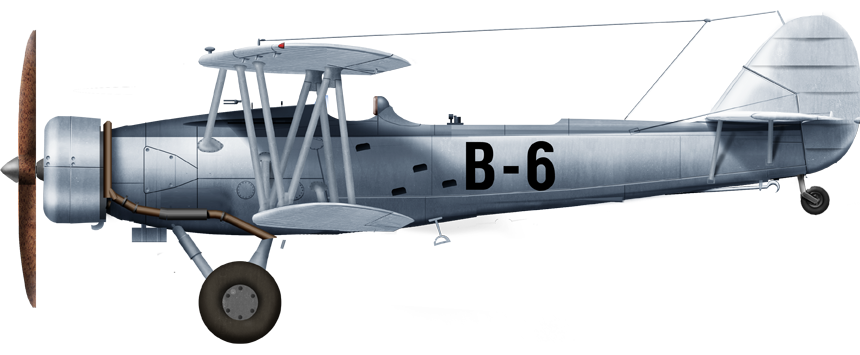
Prototype of the Shark, Blackburn B2 1934
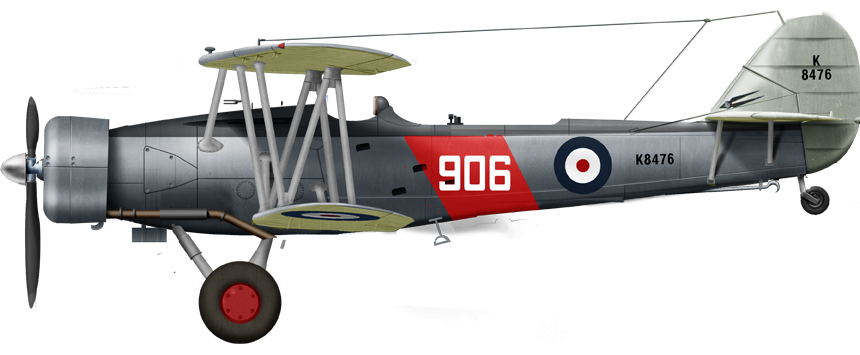
MkII 822 NAS HMS Furious c1937
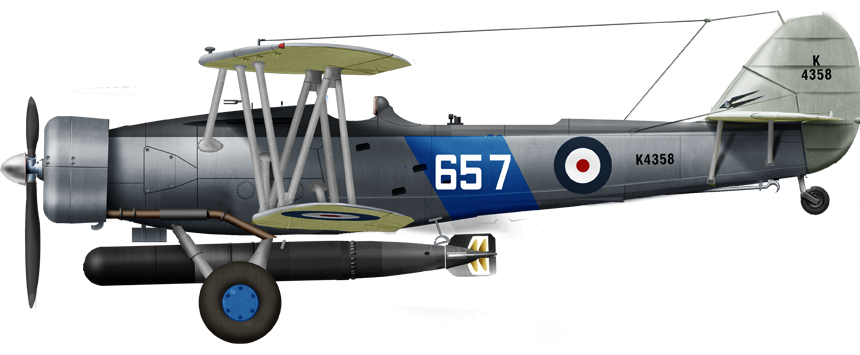
MkII FAA 820 NAS HMS Courageous 1937
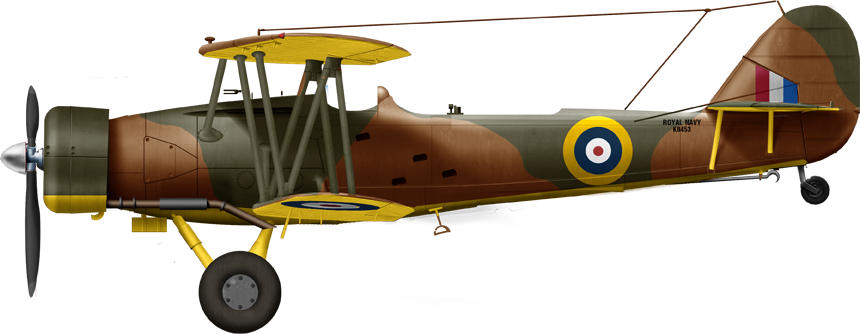
MkII FAA 750 NAS RNAS Ford 1941
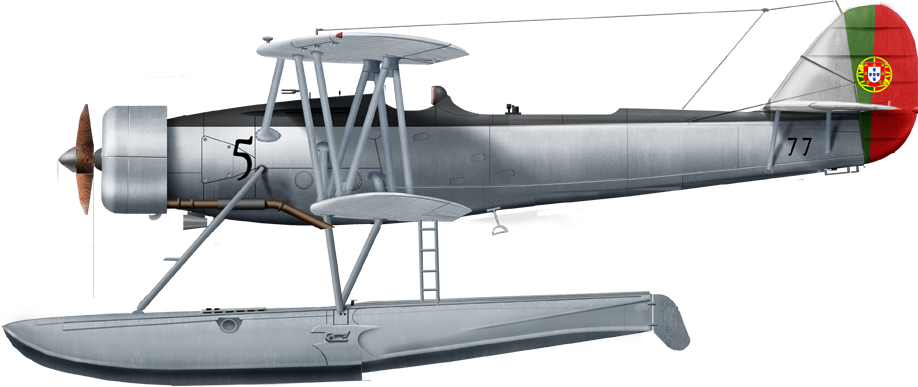
Mark IIA Portuguese Navy 1936
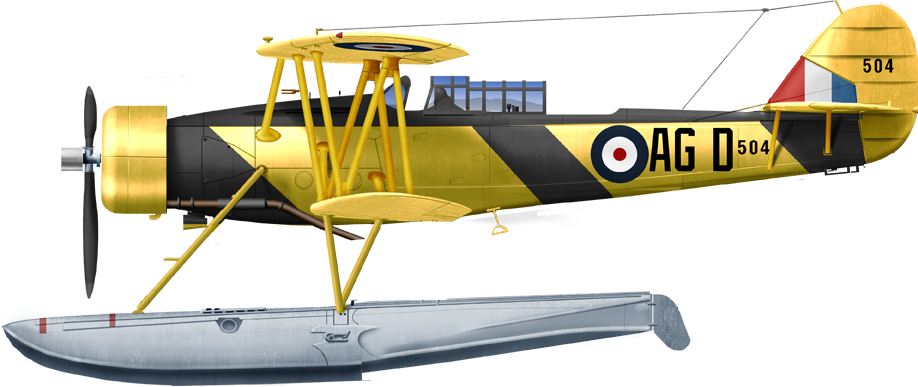
Mark III, 122 Sqn RCAF 1940
Additional photos
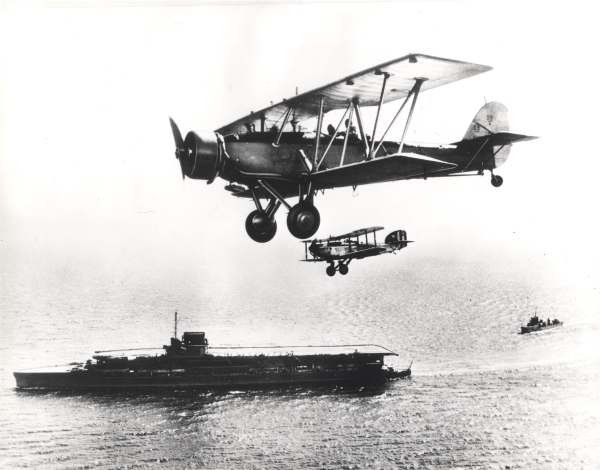
Overflying HMS Courageous in 1935
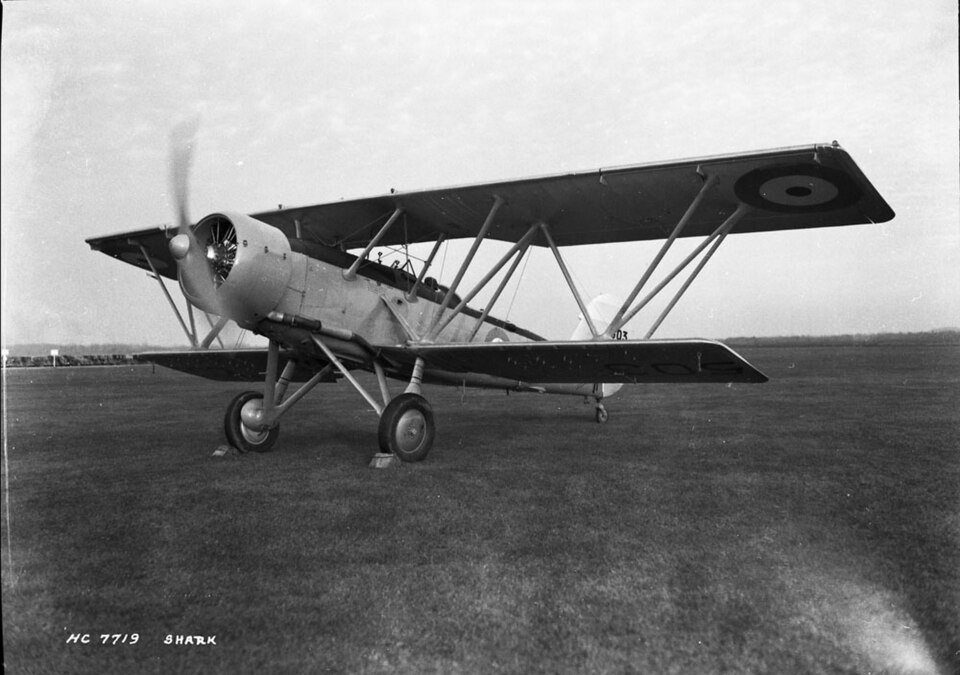
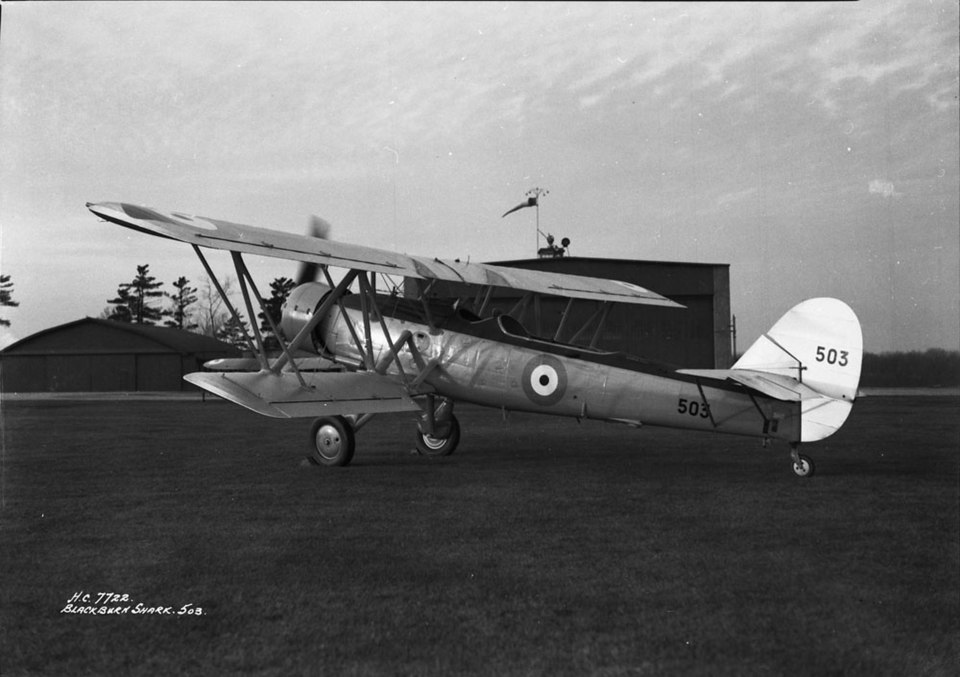
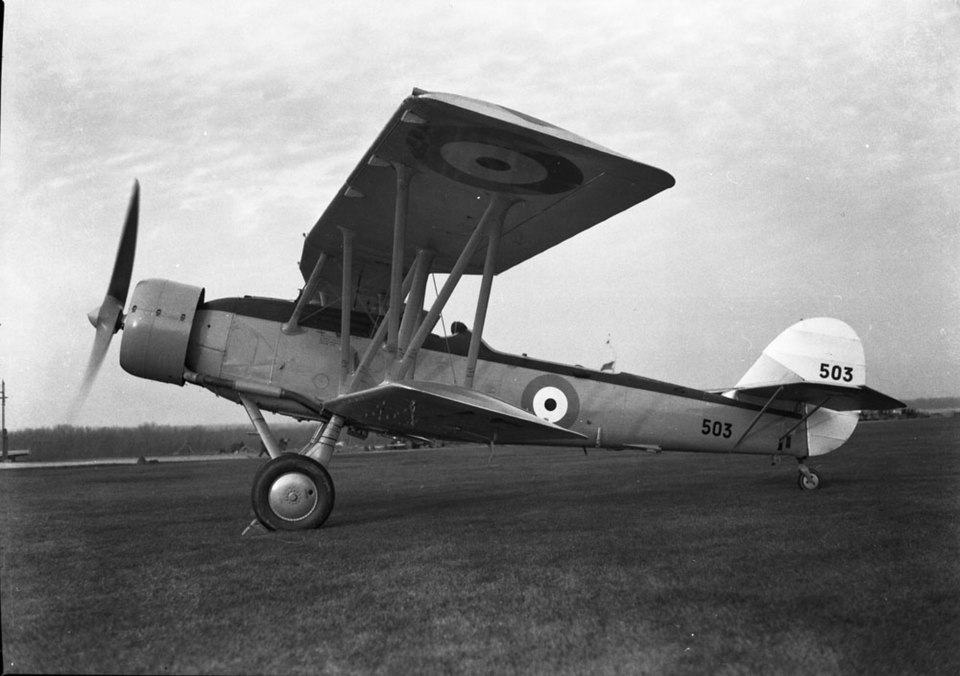
Production Mark I
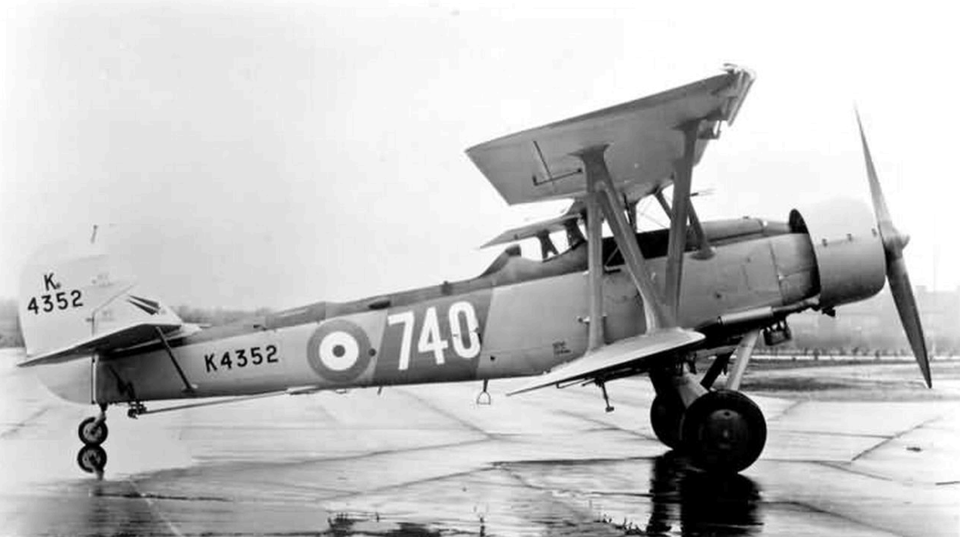
Shark Torpedo Bomber 1935
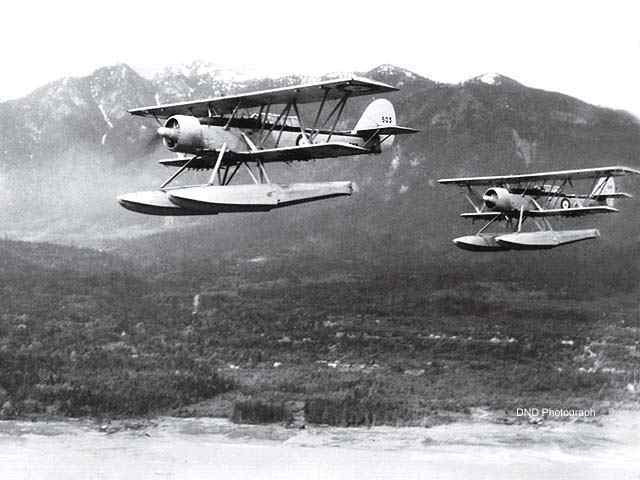
Canadian Shark Mark-III
Links and resources

Kostenuk, Samuel; Griffin, John (1977). RCAF Squadron Histories and Aircraft 1924-1968. Toronto
Blackburn Shark By Dariusz Karnas MMP Books, Scale Plans; September 2022
Jackson, A. J. (1968). Blackburn Aircraft since 1909. London: Putnam.
Mason, Francis K. (1994). The British Bomber since 1914. London: Putnam Aeronautical Books.
Molson, K. M.; Taylor, H. A. (1982). Canadian Aircraft since 1909. Stittsville. Canada's Wings Inc.
Shores, Christopher; Cull, Brian; Izawa, Yasuho (1992). Bloody Shambles: V1, The Drift to War to the Fall of Singapore. Grub Street.
Taylor, John W. R. (1969). "Blackburn Shark.". Combat Aircraft of the World from 1909 to the present. Putnam
. Thetford, Owen (1978). British Naval Aircraft since 1912 (4th rev. ed.). London: Putnam.
Vincent, Carl (1977). The Blackburn Shark (Canada's Wings Vol. 1). Stittsville. Canada's Wings.
Blackburn Shark (MMP Books 75), Scale Plans No. 75 Dariusz Karnas 2022
The Blackburn Shark in Royal Canadian Air Force Service (Kestrel Publications 26) K.A.P. PROFILE No. 26 T.F.J. LEVERSEDGE
valourcanada.ca
silverhawkauthor.com
historyofwar.org
aviadejavu.ru
awm.gov.au
destinationsjourney.com
aviastar.org
britishaircraft.co.uk
aircraftww
jetsprops.com
warbirdsresourcegroup.org
hushkit.net
navweaps.com
en.wikipedia.org
wings-aviation.ch
avionslegendaires.net
hyperscale.com
The model corner
hangar47.com/blackburn-shark-preview
scalemates: FROG, Modelcraft, Eastern Express, Novo, Comet kits, etc.
adamrehorn.wordpress.com
reviews.ipmsusa.org
super-hobby.co.uk
- Lohner E (1913)
- Macchi M3 (1916)
- Macchi M5 (1918)
- Ansaldo ISVA (1918)
- Sopwith Baby (1916)
- Short 184 (1916)
- Fairey Campania (1917)
- Sopwith Cuckoo (1917)
- Felixstowe F.2 (1917)
- Friedrichshafen FF 33 (1916)
- Albatros W4 (1916)
- Hanriot HD.2
- Grigorovitch M5
- IJN Farman MF.7
- IJN Yokosho Type Mo
- Yokosho Rogou Kougata (1917)
- Yokosuka Igo-Ko (1920)
- Curtiss N9 (1916)
- Aeromarine 39
- Vought VE-7
- Douglas DT (1921)
- Boeing FB.5 (1923)
- Boeing F4B (1928)
- Vought O2U/O3U Corsair (1928)
- Supermarine Seagull (1922)
- Blackburn Ripon (1926)
- Fairey IIIF (1927)
- Fairey Seal (1930)
- Caspar U1 (1921)
- Dornier Do J Wal (1922)
- Rohrbach R-III (1924)
- Mitsubishi 1MF (1923)
- Mitsubishi B1M (1923)
- Yokosuka E1Y (1923)
- Nakajima A1N (1927)
- Nakajima E2N (1927)
- Nakajima A4N (1929)
- CANT 18
WW1
✠ K.u.K. Seefliegerkorps: USA
USA
Interwar
- Curtiss SOC seagull (1934)
- Grumman FF (1931)
- Curtiss F11C Goshawk (1932)
- Grumman F2F (1933)
- Grumman F3F (1935)
- Northrop BT-1 (1935)
- Grumman J2F Duck (1936)
- Consolidated PBY Catalina (1935)
- Brewster/NAF SBN-1 (1936)
- Curtiss SBC Helldiver (1936)
- Vought SB2U Vindicator (1936)
- Brewster F2A Buffalo (1937)
- Douglas TBD Devastator (1937)
- Vought Kingfisher (1938)
- Curtiss SO3C Seamew (1939)
- Douglas SBD Dauntless (1939)
- Grumman F4F Wildcat (1940)
- F4U Corsair (NE) (1940)
- Brewster SB2A Buccaneer (1941)
- Grumman TBF/TBM Avenger (1941)
- Consolidated TBY Sea Wolf (1941)
- Grumman F6F Hellcat (1942)
- Curtiss SB2C Helldiver (1942)
- Curtiss SC Seahawk (1944)
- Grumman F8F Bearcat (1944)
- Ryan FR-1 Fireball (1944)
- Douglas AD-1 Skyraider (1945)
Fleet Air Arm
- Fairey Swordfish (1934)
- Blackburn Shark (1934)
- Supermarine Walrus (1936)
- Fairey Seafox (1936)
- Blackburn Skua (1937)
- Short Sunderland (1937)
- Blackburn Roc (1938)
- Fairey Albacore (1940)
- Fairey Fulmar (1940)
- Grumman Martlet (1941)
- Hawker sea Hurricane (1941)
- Brewster Bermuda (1942)
- Fairey Barracuda (1943)
- Fairey Firefly (1943)
- Grumman Tarpon (1943)
- Grumman Gannet (1943)
- Supermarine seafire (1943)
- Blackburn Firebrand (1944)
- Hawker Sea Fury (1944)
IJN aviation
- Aichi D1A "Susie" (1934)
- Mitsubishi A5M "Claude" (1935)
- Nakajima A4N (1935)
- Yokosuka B4Y "Jean" (1935)
- Mitsubishi G3M "Nell" (1935)
- Nakajima E8N "Dave" (1935)
- Kawanishi E7K "Alf" (1935)
- Nakajima B5N "Kate" (1937)
- Kawanishi H6K "Mavis" (1938)
- Aichi D3A "Val" (1940)
- Mitsubishi A6M "zeke" (1940)
- Nakajima E14Y "Glen" (1941)
- Nakajima B6N "Jill" (1941)
- Mitsubishi F1M "pete" (1941)
- Aichi E13A Reisu "Jake" (1941)
- Kawanishi E15K Shiun "Norm" (1941)
- Nakajima C6N Saiun "Myrt" (1942)
- Yokosuka D4Y "Judy" (1942)
- Kyushu Q1W Tokai "Lorna" (1944)
Luftwaffe
- Arado 196 (1937)
- Me109 T (1938)
- Blohm & Voss 138 Seedrache (1940)
Italian Aviation
- Savoia-Marchetti S.55
- IMAM Ro.43/44
- CANT Z.501 Gabbiano
- CANT Z.506 Airone
- CANT Z.508
- CANT Z.511
French Aeronavale
- GL.300 (1926-39)
- Levasseur PL.5 (1927)
- Potez 452 (1935)
- Loire 210 (1936)
- Loire 130 (1937)
- LN 401 (1938)
Soviet Naval Aviation
- Shavrov SH-2 (1928)
- Tupolev TB-1P (1931)
- Beriev MBR-2 (1930)
- Tupolev MR-6 (1933)
- Tupolev MTB-1 (1934)
- Beriev Be-2 (1936)
- Polikarpov I16 naval (1936)
- Tupolev MTB-2 (1937)
- Ilyushine DB-3T/TP (1937)
- Beriev Be-4 (1940)
-
Skoda Š-328V
R-XIII Idro
Fokker C.XI W (1934)
WW2
- De Havilland Sea Vixen
- Hawker Sea Hawk
- Supermarine Scimitar
- Blackburn Buccaneer
- Hawker Sea Harrier
- Douglas A4 Skyhawk
- Grumman F9F Panther
- Vought F8 Crusader
- McDonnell-Douglas F-4 Phantom-II
- North Am. A5 Vigilante
- TU-142
- Yak 38 forger
☢ Cold War
✧ NATO
 Fleet Air Arm
Fleet Air Arm
 US Navy
US Navy
☭ Warsaw Pact
Merch
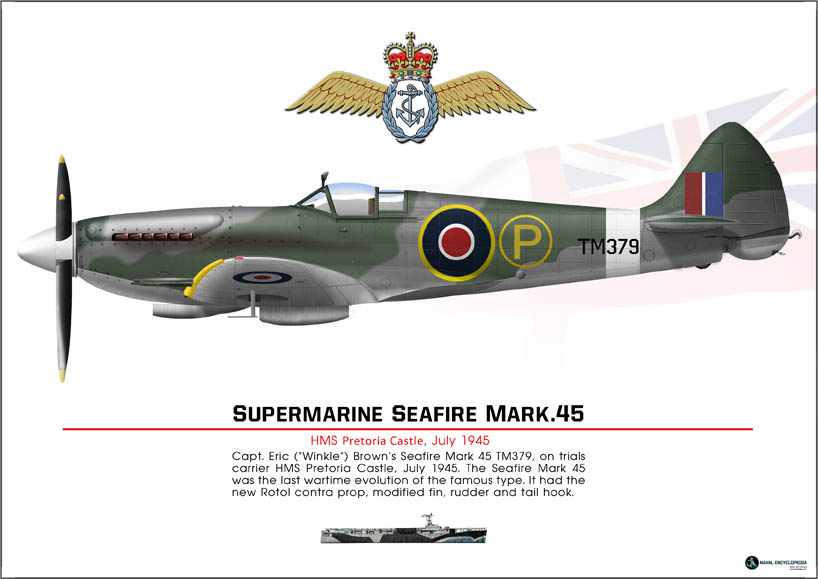
Seafire Mark 45; HMS Pretoria Castle
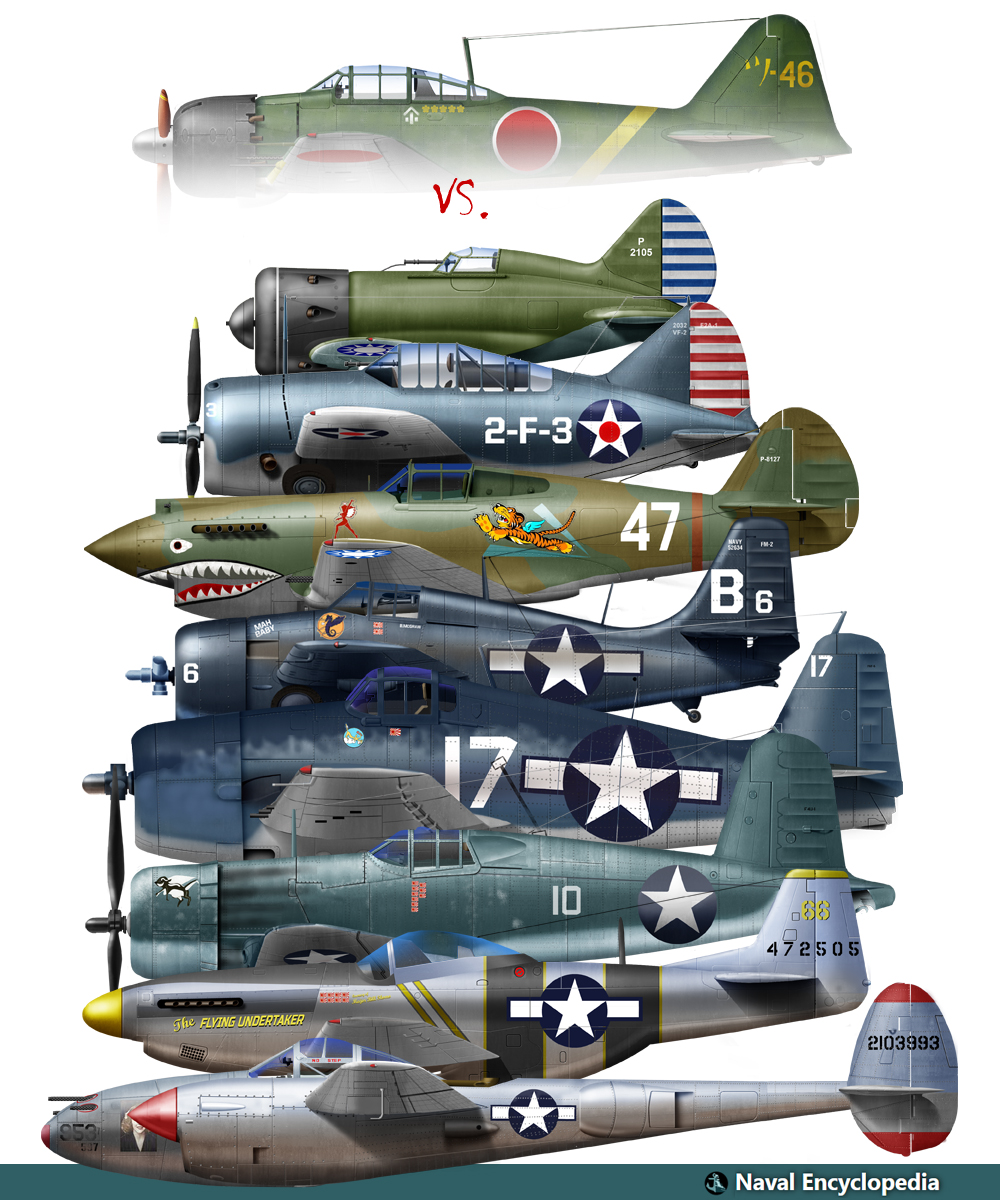
Zeros vs its aversaries
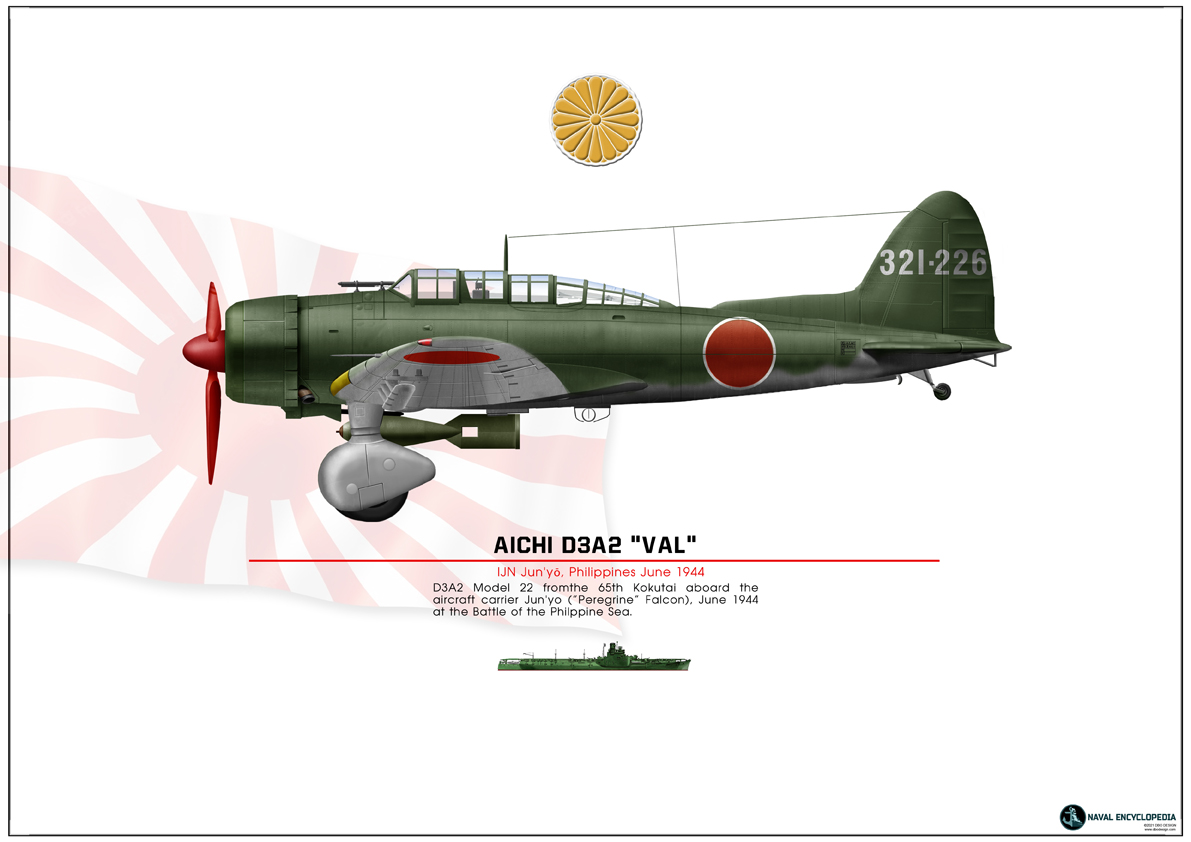
Aichi D3A “Val” Junyo
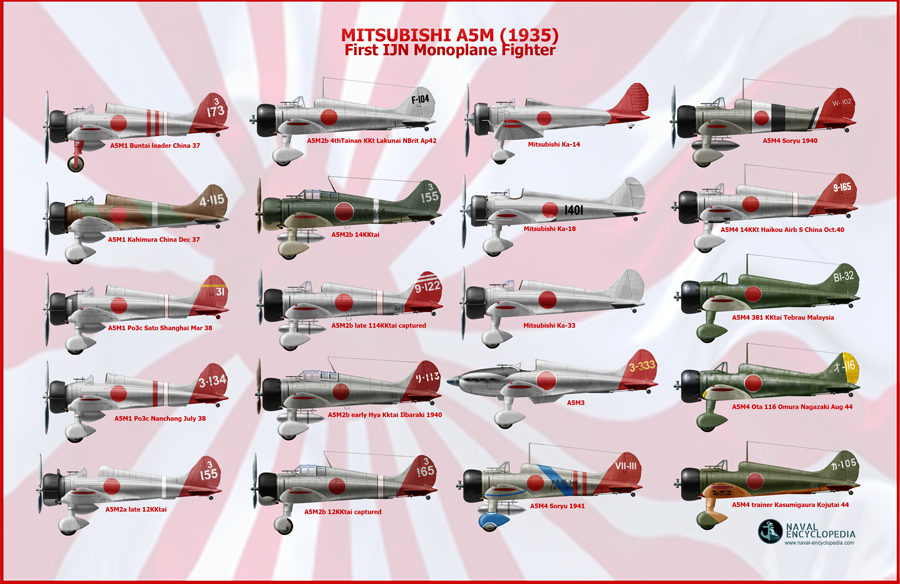
Mitsubishi A5M poster
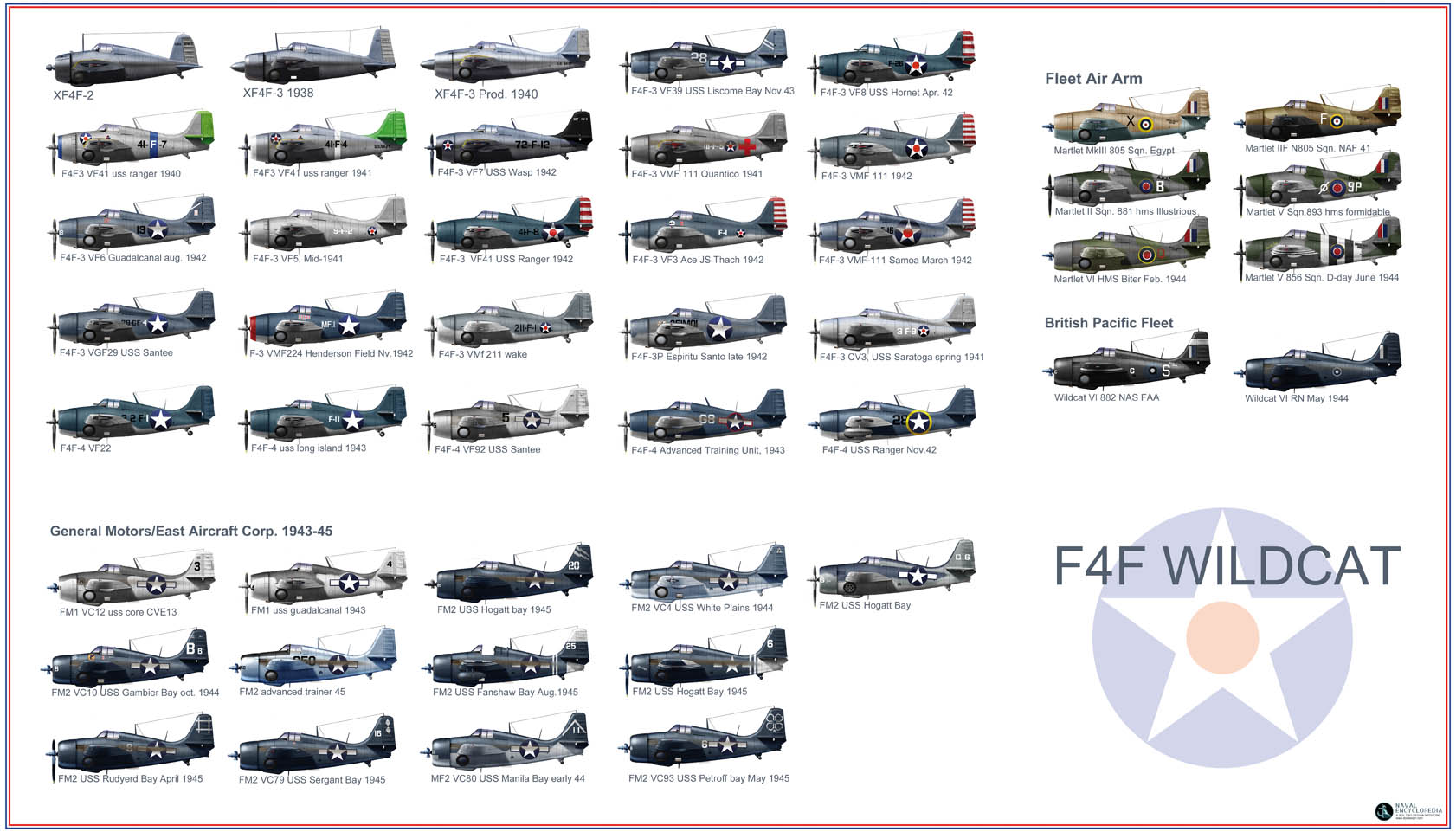
F4F wildcat
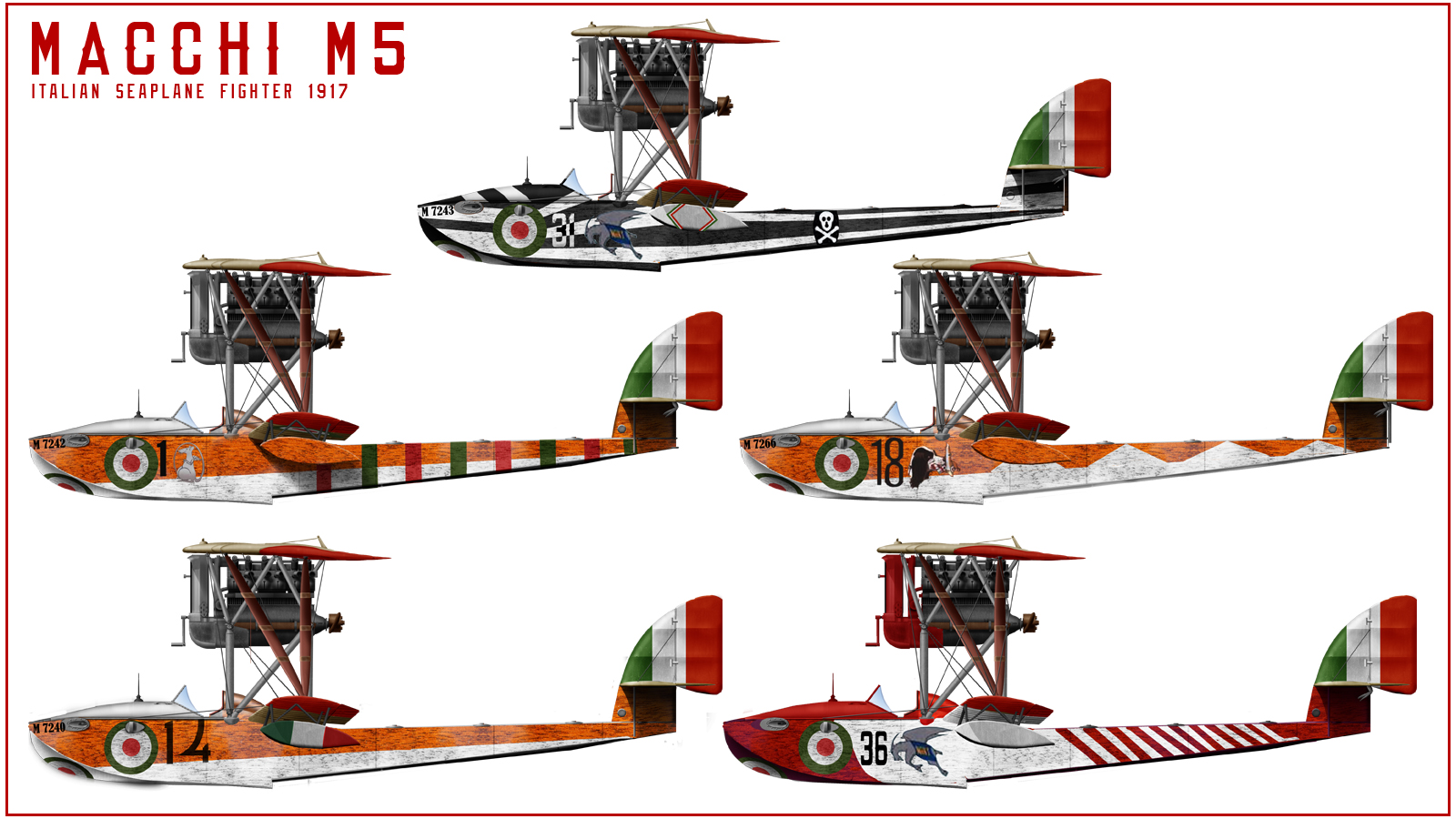
Macchi M5
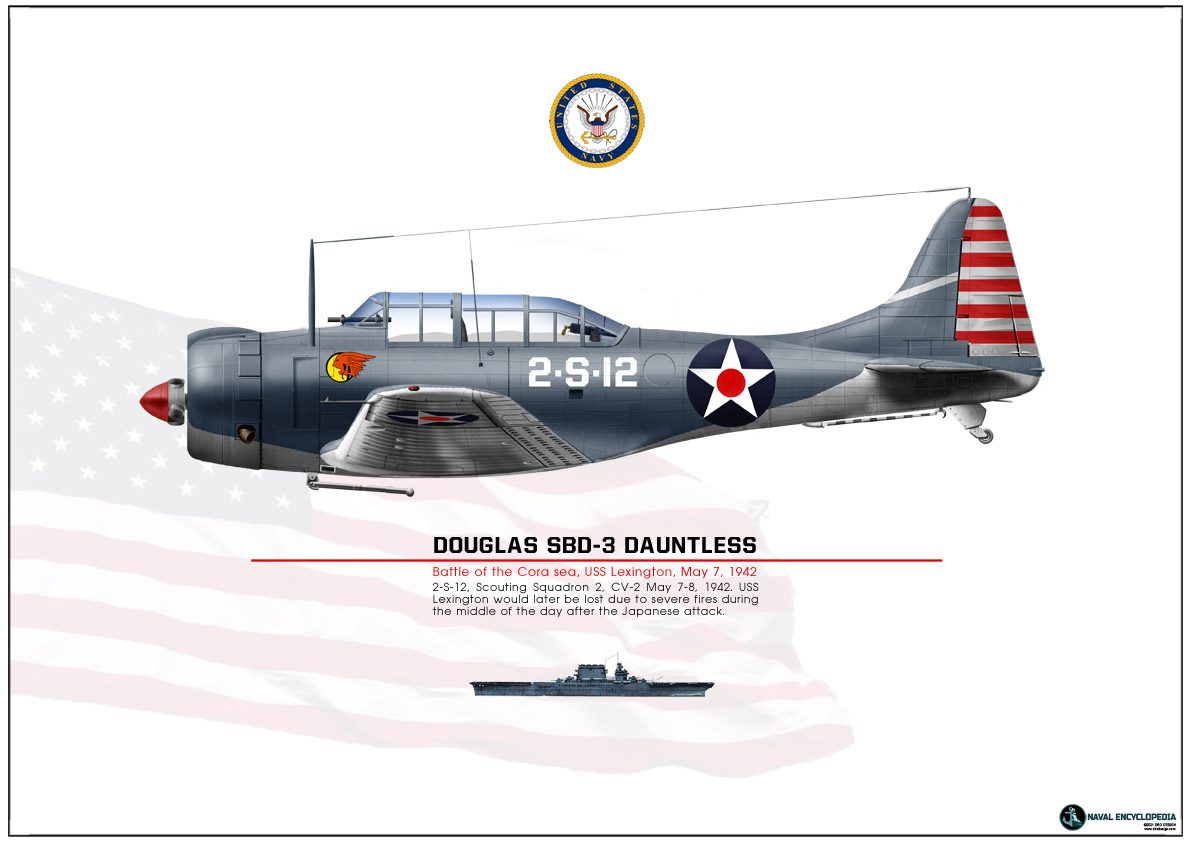
SBD Dauntless Coral Sea
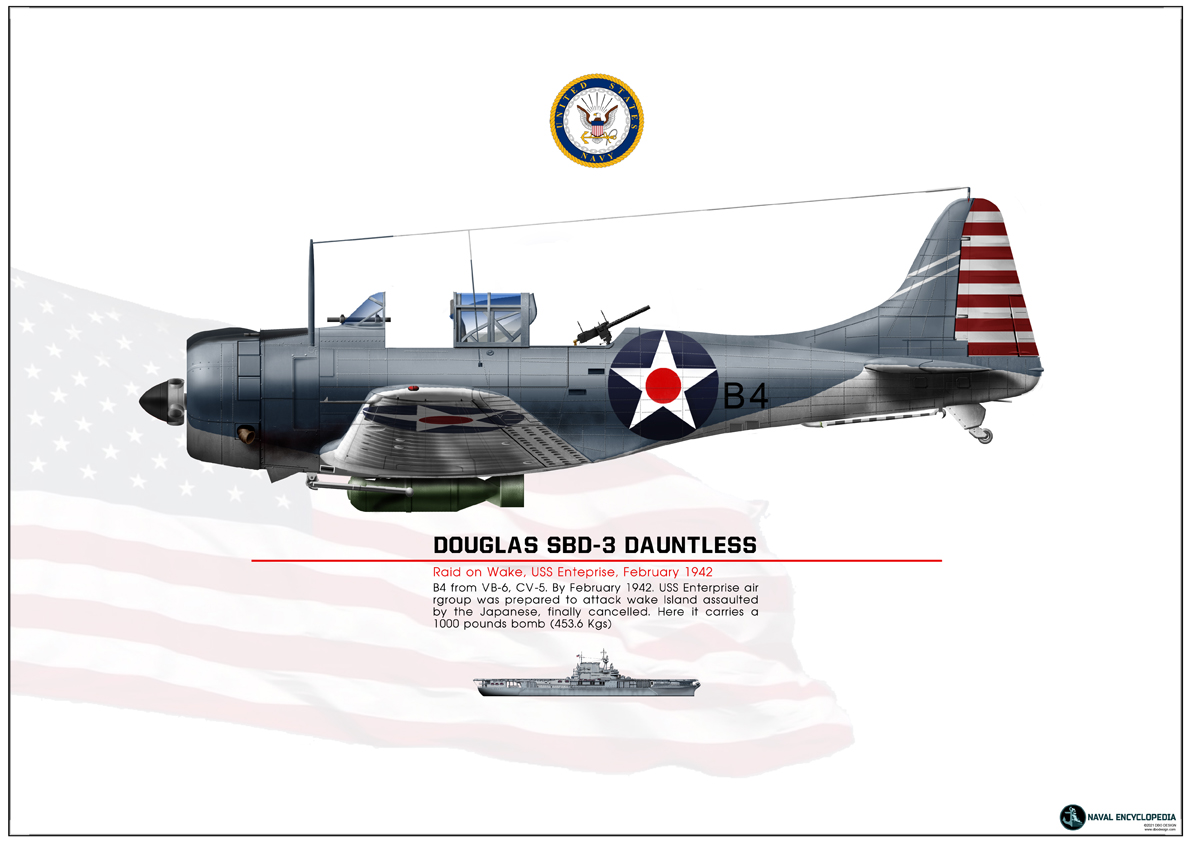
SBD Dauntless USS Enterprise
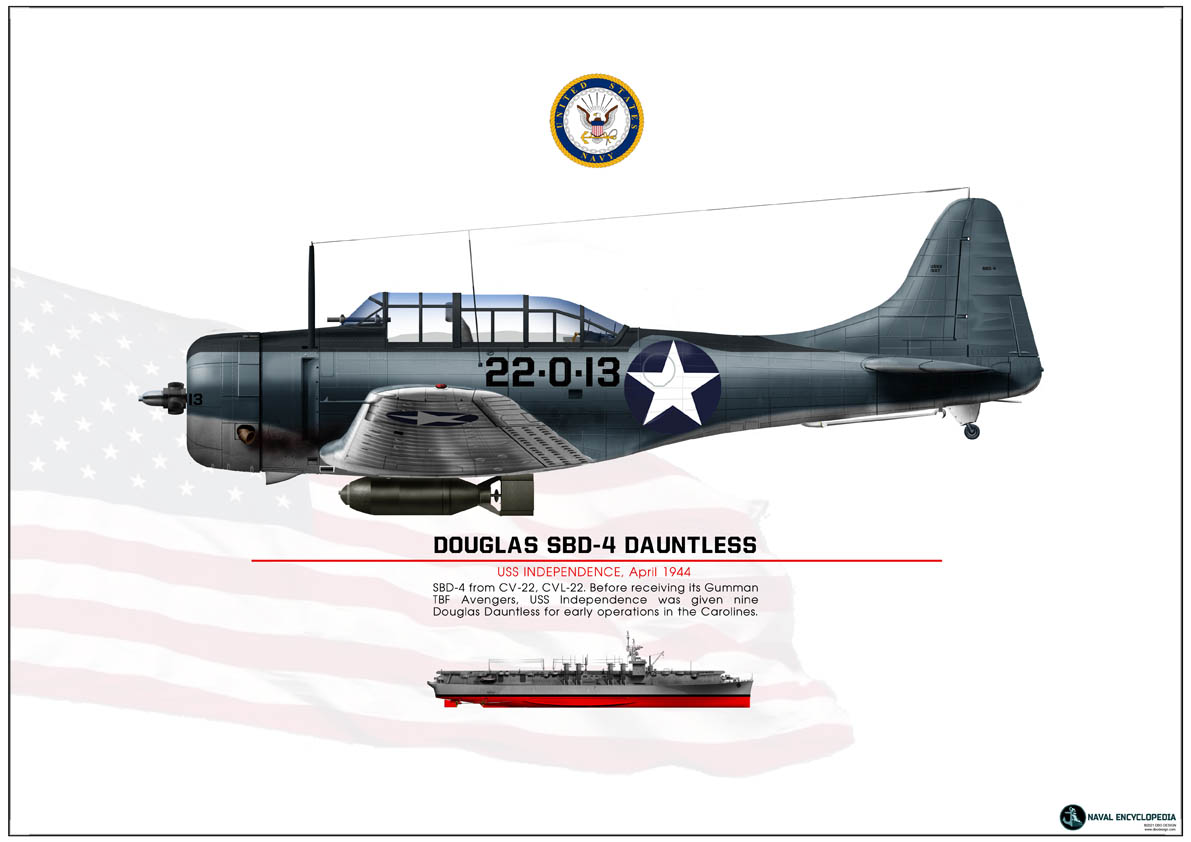
SBD-4 CV22
